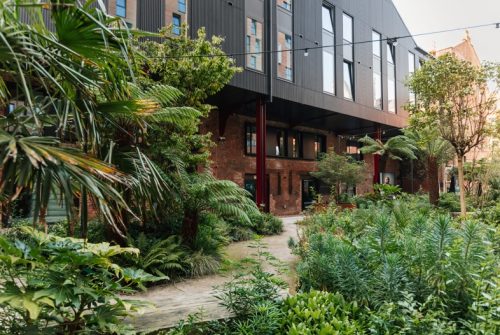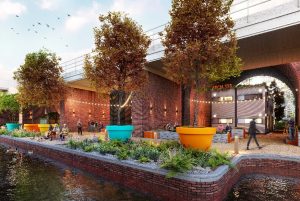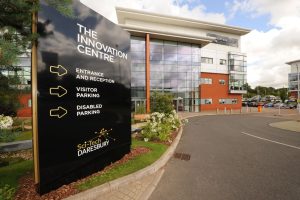Why taking risks on social impact delivers the greatest rewards

By Tim Heatley, co-founder at Capital&Centric

Tim Heatley
Stereotypes peg developers as villains, complete with bad aftershave, big Bentleys and a general disregard for the communities whilst pocketing pound notes.
So, when I describe Capital&Centric as a social impact developer, people often scratch heads or roll eyes. What does it mean? For us, it’s all about risk and reward.
When you choose to fully commit to a goal, it’s super rewarding when you reach it. The pay-off’s all the sweeter when you’ve overcome barriers or started from a place of disadvantage.
We apply that to the challenge of delivering social impact. But why bother?
Firstly, it’s good for businesses … our projects focus on creating high quality jobs in locations of high worklessness or super energy-efficient spaces, or restoring and preserving historic buildings – all things that have helped us develop a loyal following.
But it often means taking the road less travelled. When we chose to give ‘first dibs’ on our apartments to owner occupiers and banned buy-to-let investors, it meant committing to the long game to address the issue of people being shut out of buying in city centres.
It was a risk, but the reward was incredible.
At Crusader Mill in Manchester, a sense of neighbourliness runs through the place, with games nights, joint dog walks and a support network of friends that’s rare to see in new city communities.
The same notion applies to regeneration of our town centres. Some have garnered the ‘left behind’ moniker – a catch-all shorthand for once previously thriving towns in need of a vibrant future.
Creating genuine, design-led communities there takes vision and risk. You’re generally starting from a position of disadvantage, be it lower land values and viability issues or outdated perceptions that town centres are just places to shop.
Sometimes the road is less travelled for a reason, but it’s all the more rewarding.
The willingness of the local authorities to collaborate on a vision and partners like Homes England, the combined authorities, councils, and government to break tradition from funding and delivery models, means exciting opportunities are being embraced in places like Stockport, Bolton and Rochdale, where we’re actively delivering exciting new communities.
For me personally, it’s my experience as a kid that drives me. I grew up in Salford, with other people who were in need of special care, support, or protection because of their circumstances, disability or risk of abuse and neglect.
My mum and dad, both care workers, agreed with Salford Council to care for young adults with severe learning difficulties in our own family home for most of my childhood. At the time, it was a pioneering approach, subsequently replicated elsewhere.
When I was 13, my dad lost his job – and a seven-person household is a big old food bill. Changes were made to make ends meet, a stark reminder of how quickly things can change for people, no matter how hard working or well intentioned.

Plans for the Embassy Village
And I was one of the lucky ones, some of the other kids in the free school meal line with me were only eating once a day, living in care, on the margins of society.
Such experiences stay with you. They drive you not just to create places, but communities that raise people up and deliver lasting benefits.
That can take many forms, whether it’s championing fledgling businesses just starting out or revitalising neighbourhoods that have struggled to attract investment.
The Embassy Village project we’re helping deliver in Manchester, turning railway arches into a community that gives vulnerable people experiencing homelessness their own front door, is just one example of making cities a place of safety for people in all circumstances.
It’s why we, too, are committed to leaving the ladder down – we’re in a privileged position to be able to pass on the lessons learnt (good and bad) to the next generation. It’s why we founded ‘Regeneration Brainery’ – the non-profit intensive mentoring programme which has now worked with over 1,000 young people and been supported by dozens of property professionals – seeking to inspire people into regeneration.
Whilst many of the young ‘brainees’ begin behind the starting line due to things like their location, education and access to opportunities, their life experiences mean they bring new perspective and fresh ideas. It’s the inclusive communities they’ll go on to create that will reap the rewards of the risks we’re taking now.
Such an approach couldn’t be further from the bad-boy image of bygone developers. Whilst taking a risk on turning a profit still keeps us awake at night, taking a risk on social impact is what pays dividends to communities.
It means, when creating a community, you leave behind something exceptional, rather than run of mill.

![PPV.FREE ! Ways To Watch Los Angeles Lakers vs Minnesota Timberwolves Game 3 Live Streams NBA Playoffs [PPV] and TV Channel](https://www.thebusinessdesk.com/northwest/wp-content/themes/thebusinessthemeMKII/assets/images/bg-white.png)




